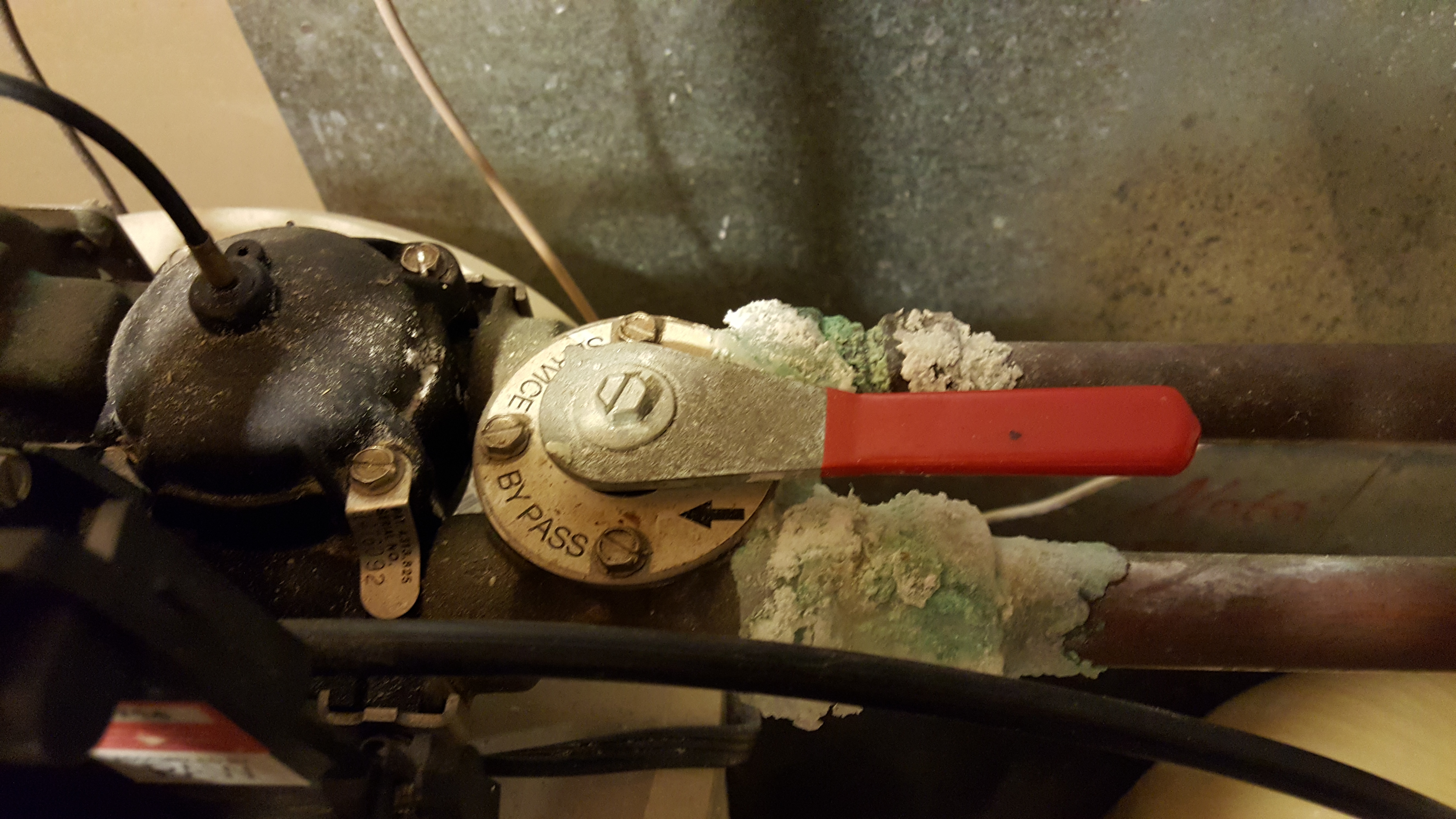A follow up question if I may. I haven't been successful in turning the valve so far. I am thinking about purchasing a replacement, making an appt with the plumber and trying more force then so if everything fails, we don't have a flood or no water. It looks like you can now replace my brass valve with a stainless steel version.
I suspect your current valve is stainless. The main reason to bypass would be if there was backpressure, the bypass could let you bypass the softener for testing or other reason. I would figure a way to apply more force. Ask a friend with more tools what he has. If buying a new tool for the purpose, I would look at a Milwaukee 10 in. Torque Lock Locking Pliers. The straight jaw might be best for this, but the curved jaw version could be good for this. I like mine.
Your handle looks more accessible compared to mine. So rather than a pliers, I would use a length of pipe. I measure the plastic covering my handle to be a little less than 3/4 wide. You could take a piece of type L or M copper pipe, and use that as a handle extender. 3/4 steel or PVC would work too. So would 3/4 EMT conduit.
I just tried operating mine again. It is stiff, and takes force. I did not need to use a tool, but if mine had sat un-operated for many years, I might need a tool.
But, what plagues us is very corrosive well water. To give you an idea how bad it is, we are going through a new hot water heater about every 3 years even when we purchase the extra anode rod. I am worried about increased corrosion with the metal difference steel on copper tubing. Should I be concerned over that?
If you were doing the re-do, you might move to the plastic version. These valves can be rebuilt with a kit in the $60 region. If doing stuff, you might consider that too.
On the acid water, you should have a water test that include pH, hardness, iron, manganese, alkalinity, corrosivity, arsenic and more. Unfortunately the company that was offering a nice lab test for $60 including shipping is not doing that for now. :-( Testing is available for $120 plus shipping if you don't opt for the bacterial test. I suspect buying their UPS shipping option may be cheaper than what you would pay on your own.
http://www.ntllabs.com/Merchant2/merchant.mvc?Screen=CTGY&Store_Code=NTL&Category_Code=Well+Water
It is possible there is a local company. Testing via the county is usually only testing for the bacteria, and not what your problems are. I expect there are exceptions.
Acid water can be treated, as can other things. I suggest you post your water test results into the softener forum (includes other water treatment too). Include a description of what you have. I presume you own your current equipment.
This is the softener forum:
https://terrylove.com/forums/index.php?forums/water-softener-forum-questions-and-answers.22/

